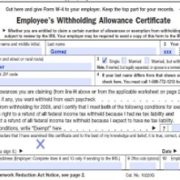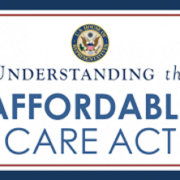The Impact of the Tax Cuts and Jobs Act on Your Favorite Charity
There are many winners and losers from the recent Tax Cuts and Jobs Act passed by Congress in December 2017, and nonprofits may be one of the biggest losers. While you may still plan on contributing to your local charity in 2018 and beyond, it will be harder for you to receive the tax benefit due to an increase in the standard deduction. While not everyone gives to charity to take a tax deduction, there will be a substantial downshift in the quantity and frequency of contributions that nonprofits may start to see. The upside is that these impacts are ‘temporary’ as a part of the TCJA and will phase out by 2025 unless extended by Congress.
What’s changed?
A major part of the TCJA was a simplification in tax filing. This streamlining resulted in an increase in the standard deduction from $6,350 to $12,000 for single individuals and $12,700 to $24,000 for married couples. It is estimated that the approximate 30 percent of tax payers who currently itemize their deductions will drop to about 6 percent in 2018. That translates to a drop of between $12 billion to $20 billion in charitable giving and charitable tax deductions according to the Tax Policy Center. Less itemized deductions means less opportunity for would-be donors to take a tax deduction for their charitable giving. Nonprofits are already bracing for the financial black hole that is to come.
Taxpayers are thinking strategically about their charitable giving, too. The New York Times wrote recently about the option of ‘bunching’ charitable contributions. Bunching is where instead of making annual contributions to charity, tax payers would accumulate donations over several years and make them in one year’s worth of gifts in order to take the larger itemized deduction and receive the tax break. But what happens to the nonprofit that counts on a steady stream of income and now faces substantial changes to donations? Let’s take a quick look at donor advised funds. A somewhat daunting term for what translates to donating funds privately, donor advised funds allow the contributors to donate money and take the tax deduction in the same year, but pay the money to chosen charities over a predetermined time horizon. The donor doesn’t control the money once it’s deposited to the fund, but can direct the fund’s administrator on how they would like the dollars allocated. Additionally, certain funds have an investment component that allows the fund to potentially yield even greater profits down the road. While donor advised funds aren’t new to the financial industry, they are gaining traction as larger national funds have affiliated with big financial firms such as Fidelity and Charles Schwab.
In addition to the increase of the standard deduction, taxpayers are also facing substantially limited deductions for state and local taxes along with home mortgage interest. In states like California, New York, and Massachusetts, where both local and state taxes are high coupled with high real estate values may mean that the tax burden will be greater and charitable giving even less.
There is a small upside to these changes. The Act calls for an increase in the amount of deduction that an individual can make from 50 percent to 60 percent of his/her adjusted gross income. The nonprofit may see a slightly larger contribution than had been seen previously. Time will tell if this greater increase in donation maximums will bear fruit for nonprofits big and small across the country.
If you have questions or still aren’t clear on what type of contributions will be deductible or what your deduction threshold is, it may be time to talk with a Small Business Advisor. You can find one in your area by clicking on the Find an Accountant link above.
PASBA member accountants bring the collective resources of a nationwide network of Certified Public Accountants, Public Accountants, Enrolled Agents and other practitioners available to answer your tax and financial questions and streamline your business accounting, bookkeeping, and payroll operations.
To find a trusted accountant in your area, visit www.SmallBizAccountants.com.
Please be advised that, based on current IRS rules and standards, any advice contained herein is not intended to be used, nor can it be used, for the avoidance of any tax penalty that the IRS may assess related to this matter. Any information contained in this article, whether viewed or subsequently printed, cannot be relied upon as qualified tax and accounting advice. Any information contained in this article does not fall under the guidelines of IRS Circular 230.




